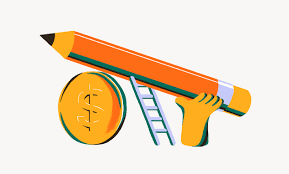How Substack Became The Newsletter Platform
Substack set out in 2017 to democratize online content creation, giving writers the opportunity to grow their individual brands and revenue through subscriptions.
A Better Future For News
Substack was founded in 2017 by Chris Best (Kik messenger co-founder), Hamish McKenzie (former journalist and lead writer for Tesla), and Jairaj Sethi (developer and current CTO). At a time of media and journalist layoffs, when Google and Facebook were changing online income sources for digital publications by dominating advertisement revenue, Substack set out with the mission to “build a better future for writers” by providing a simple-to-use platform that allowed content creators creative and financial control.
The idea was simple: people want to hear from interesting writers who discuss topics they enjoy. Therefore, all niches and rabbit holes were encouraged, opening the gates for content creators to pursue their artistic, journalistic, and financial visions. No longer solely reliant on major digital publications for a payday, well-known authors and journalists quickly turned to Substack’s subscription-based model, where they could offer their newsletters for free or set the price they wanted readers to pay to access their work.
“At the core of Substack’s mission is the belief that, by democratizing the tools that they need to create independent businesses, we can help writers succeed in an era in which the overall market for news grows dramatically.” -Chris Best, Substack Co-Founder
Revenue Model

What readers pay for content is decided by each individual Substack’s newsletter creator. While the site’s most popular creators make over seven-figures, many are unable to make a living, drawing a comparison in Ben Smith’s New York Time’s article, “Why We’re Freaking Out About Substack” to the content-creator versions of Uber drivers. Subtack’s profits come from retaining 10% of subscription fees its content creators charge their subscribers. Stripe, Substack’s payment processor also charges 2.9% +$0.30 as a transaction fee.
The subscriber-based model frees Substack creators from click quotas and content farming in order to please advertisers. It also gives them control over their publications, making their work accountable only to them before publication. The freedom of Substack’s revenue model has allowed for continued growth with the site reaching over 500,000 paid subscribers in November 2021.
“News organizations—and other entities that masquerade as them—are turning to increasingly desperate measures for survival. And so we have content farms, clickbait, listicles, inane but viral debates over optical illusions, and a “fake news” epidemic. Just as damaging is that, in the eyes of consumers, journalistic content has lost much of its perceived value—especially as measured in dollars.” -Chris Best & Hamish McKenzie, Substack Co-Founders
Substack Pro
In an effort to recruit high-profile writing and media talent, Substack now offers Substack Pro deals to creators with a large built in following, encouraging them to take a high up-front payment to cover their first year on the platform while they establish their following instead of relying on platform subscription fees. In return for their one-year advance, Substack Pro writers give 85% of subscription costs to Substack. Substack claims their Pro option is another way they’re putting writers first, helping authors and journalists get paid in an industry where salaries are shrinking. But many content creators disagree: Substack Pro user and controversial pro-Iraq-War blogger turned Vox media “journalist” Matt Yglesias claims the deal cost him over $400,000 in his first year.
The Pandemic & The Substack Trend
In the age of self-promotion and brand management on the internet, it’s not surprising to see many creators taking charge of their content and revenue options through the use of growing subscription platforms like Patreon (podcast subscription platform, which Substack has listed as an inspiration) Onlyfans (adult fan site: warning adult content), and Cameo (celebrity personalized videos). After the Covid-19 pandemic brought more layoffs to newsrooms and limited opportunities for freelance journalists, Substack created a grant program to attract content-creators to their platform. The move worked, bringing in many high-profile journalists and authors. Public figures like Glenn Greenwald, Matt Yglesias, Bari Weiss, and others joined Substack during the pandemic after Twitter controversies, public resignations from their employers, or to show their support for the platform’s dedication to free speech.
For authors like George Saunders, Salman Rushdie, and Chuck Palahnuick, Substack is a new way to connect to readers who are passionate about their work. It’s a platform where they can give writing advice, create short stories, or share their newsletters about what they’re writing or reading to their thousands of subscribers.
“The point of doing this is to have a closer relationship with readers, to speak freely, without any intermediaries or gatekeepers.” -Salman Rushdie, Novelist
A Content Moderation Problem or Free Speech
Many LGBTQIA+ activists and Substack creators, particularly those in the transgender community, left Substack in protest of the platform allowing anti-trans hate speech to continue to be published on its site. In response, Substack doubled down on one of their key founding principles-content creators are in charge of their work, and Substack will continue to be a place that promotes free speech.
Substack has joined major tech companies like Twitter and Facebook in facing backlash for their moderation. However, as the site is primarily use for newsletters, encouraging readers to buy in to following content creators through subscriptions, there appears to be more choice in the content a reader sees than when they’re scrolling through Twitter or Facebook. While balancing free speech and combating fake news and hate speech continues to be a problem in Silicon Valley, Substack appears confident in their model, emphasizing the responsibility for a newsletter’s content lies in the hands of its creator.
Why Substack Works For Me
During a time when everyone seems to have a website, podcast, or YouTube channel, Substack works for me because it allows me to promote my work directly to followers in an easy-to-read and popular newsletter style. The platform’s continued commitment to leaving total control of content up to the creator, though at times can lead to shameful hate speech, gives me the creative power I look for when sharing my work. Interesting topics and people are easy for readers to find, and as a place where so many writers already exist, there is a built-in community for authors like me. So, here’s to authors speaking directly to their followers and many newsletters to come.


